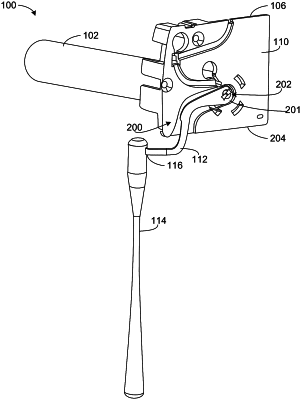| CPC E06B 9/72 (2013.01) [E06B 9/34 (2013.01); E06B 9/68 (2013.01); E06B 9/78 (2013.01); H01H 5/00 (2013.01); H02P 1/18 (2013.01); H02P 1/22 (2013.01); H02P 3/08 (2013.01); H02P 7/03 (2016.02); E06B 9/42 (2013.01); E06B 2009/6809 (2013.01); E06B 2009/6818 (2013.01); H01H 2215/004 (2013.01)] | 20 Claims |

|
1. A circuit board for an architectural covering, the circuit board comprising:
a set of switches to control movement of the architectural covering; and
a motor controller coupled with the set of switches via the circuit board, the motor controller configured to:
detect, while a motor is deactivated, a first-time switch activation, the motor coupled with the architectural covering, the first-time switch activation being based on a rotation in a first direction of an actuator positioned adjacent the circuit board;
determine that the first-time switch activation corresponds to a first switch from the set of switches;
determine that the first switch is associated with a first architectural covering direction;
activate the motor to move the architectural covering in the first architectural covering direction;
detect, while the motor is activated, a second-time switch activation; and
cease activation of the motor based on the second-time switch activation.
|